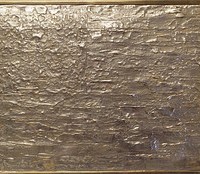-
Longtime Assistant to Jasper Johns Charged With Stealing 22 of the Artists Works
08/27/2013
 James Meyer worked as an assistant to famed contemporary artist Jasper Johns for a quarter of a century. Meyer, himself an artist, observed Johns at work, learned about his techniques, and witnessed the trajectory of a remarkable artistic career as Johns became one of the most well-known and sought-after artists of our time. Johns, now 83, was awarded the Medal of Honor by President Obama in 2011, and his works have commanded stratospheric prices (one work, Flag, sold at Christie’s in 2010 for $28.6 million).
James Meyer worked as an assistant to famed contemporary artist Jasper Johns for a quarter of a century. Meyer, himself an artist, observed Johns at work, learned about his techniques, and witnessed the trajectory of a remarkable artistic career as Johns became one of the most well-known and sought-after artists of our time. Johns, now 83, was awarded the Medal of Honor by President Obama in 2011, and his works have commanded stratospheric prices (one work, Flag, sold at Christie’s in 2010 for $28.6 million).
Last week, Meyer was arrested in connection with an alleged scheme in which, over the course of several years (2006 to 2012), Meyer stole 22 works from Johns’s Connecticut studio and sold them through a Manhattan gallery. The works allegedly sold for a total of $6.5 million, of which Meyer netted $3.4 million. Meyer was charged with interstate transportation of stolen property and wire fraud; if convicted he could face a maximum sentence of 20 years. Meyer pleaded not guilty to the charges.
According to federal prosecutors, Meyer falsified paperwork related to the art, including fake inventory numbers for the works and fake pages supposedly from a ledger at Johns’s studio. The bogus documentation was apparently meant to show that the works were finished, authorized for sale, and gifted to Meyer—none of which was true, according to the government. Rather, prosecutors say that some of the works were not even finished, and that Johns had never given permission for their sale. The gallery, which was not named or charged in the indictment, apparently passed along some of these documents to prospective buyers. Meyer also allegedly required buyers to agree not to loan, exhibit, or re-sell the works for at least eight years—presumably to keep the works out of the public eye and thereby cover his tracks.
The case is a stark demonstration that “due diligence” in art deals is not a mere formality. Fraud in the art trade is, unfortunately, a real risk—and some perpetrators may go to great lengths to provide what seems to be legitimate documentation to cover up fraudulent or even criminal activity. Even when dealing with a known and respected player with seemingly unassailable credentials and reputation, caution is needed. Unsuspecting buyers or dealers may find themselves with a work that is unsaleable, worthless, or even subject to forfeiture—not to mention the possible reputational harm that may come with unwitting entanglement in a criminal investigation. Appropriate diligence and expert advice may help innocent parties spot “red flags” in an art transaction. Buyers must have a clear understanding of a work’s provenance and the factual basis behind any assertions being made about the work’s history and ownership. Galleries and dealers must also be vigilant in verifying consignors’ and sellers’ representations and documents. Independent art experts may be able to offer assistance and another set of eyes in vetting the work’s authenticity and documentation. Legal counsel is also vital; an experienced art lawyer can help negotiate and review purchase documents, allocate risks, and protect a client’s interests in the event of a later dispute or problem with a work.
Art Law Blog
